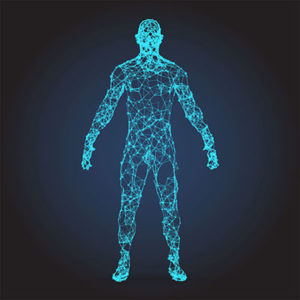Interventional Radiology: Treating Disease From Inside The Body

When most doctors think of “radiology,” they envision a doctor looking at diagnostic images on a monitor in a dark room. While that may be true for the majority of radiologists, the image is quite different for those practicing in the emerging field of interventional radiology.
That’s because interventional radiologists are responsible for treating patients as much as they are for diagnosing them.
Since its origins in the 1960s, interventional radiology (IR) has grown exponentially. In recent years, these image-guided, minimally invasive treatments are paying significant dividends to the greater healthcare community and their patients.
“We now offer treatments for conditions that previously required open surgery,” says Dr. Sharjeel Sabir of Imaging Healthcare Specialists (IHS). He and his team perform outpatient IR procedures at their Washington Street center for a variety of health conditions, including peripheral artery and vein disease, uterine fibroids, vertebral compression fractures and more.
“We want doctors to know they have options,” Dr. Sabir adds. “Options that are just as effective as surgery, but with far less risk to the patient, no hospital stay, a shorter recovery, virtually no scarring and lower overall costs.”
The education and training required to become an interventional radiologist is among the most comprehensive in medicine. After graduating medical school, they must undergo a full residency in diagnostic radiology, followed by another 1-2 years of fellowship training. In addition, because new treatments are announced each year, ongoing education is vital to maintaining the required skill level.
IR treatments are performed, in most cases, by threading a very small catheter into the body’s vascular system from the wrist or leg. The interventional radiologist uses imaging (like fluoroscopy or ultrasound) to guide the catheter to the site of the disease. A number of different techniques are used, depending on the type of disease being treated. For example, peripheral artery disease (PAD) may be treated with angioplasty and/or a stent to open the artery, clot-busting medication or embolization (the process of sealing off a vessel).
“The key is to detect PAD early,” says Dr. Derrick Allen of IHS. “When detected early, these minimally invasive procedures are effective at helping patients avoid amputations.”
Until recently, most women experiencing the pain and heavy menstrual bleeding of uterine fibroids didn’t have many options. But today, an innovative procedure known as uterine fibroid embolization (UFE) offers lasting relief without surgery. During a UFE, the interventional radiologist places tiny “microspheres” into the uterine artery. The spheres travel into the microvasculature feeding the fibroid where they effectively block the flow of blood, causing the fibroid to shrink and symptoms to disappear. “Hundreds of thousands of women have a hysterectomy each year to treat fibroids,” says Dr. Mark Schechter of IHS. “With UFE, we can now effectively treat fibroids without having to surgically remove the uterus.”
Studies show that greater than 90% of women who undergo UFE have demonstrated a high level of satisfaction and a significant improvement of quality of life, even over the long term.1,2
Vertebral compression fractures occur in 25% of all postmenopausal women and 40% of women over 80 years of age3, usually as a result of low bone mass caused by osteoporosis. Kyphoplasty is a novel interventional radiology treatment that involves the insertion and inflation of a balloon into the vertebral cavity to restore the bone to its original height. The balloon is then deflated and removed and a fast-drying cement is injected into the cavity. Studies show that more than 70% of patients achieved complete pain relief within the first week and more than 80% after 3-6 months. Perhaps most importantly, this relief was maintained for at least two years.4
“Interventional radiology is now much more than biopsies, port placement and IVC filters,” says Dr. Eric Lizerbram of IHS. “Treatments are now available for virtually every organ system in the body and many more are on the way. In addition, we are now performing interventional pain management procedures that offer lasting relief to patients, and that can help them avoid long term NSAID or opioid medication regimens. ”
For more information on the interventional radiology treatments offered at IHS, or to consult with one of our doctors, please call 858-658-6500.
REFERENCES:
1. Smith WJ, Upton E, Shuster EJ, Klein AJ, Schwartz ML. Patient satisfaction and disease specific quality of life after uterine artery embolization. Am J Obstet Gynecol. 2004;190(6):1697–1703.
2. Scheurig-Muenkler C, Koesters C, Powerski MJ, Grieser C, Froeling V, Kroencke TJ. Clinical long-term outcome after uterine artery embolization: sustained symptom control and improvement of quality of life. J Vasc Interv Radiol. 2013;24(6):765–771
3. SOURCE: American Association of Neurological Surgeons website.
4. Ledlie JT, Renfro MB. Kyphoplasty treatment of vertebral fractures: 2-year outcomes show sustained benefits. Spine J. 2006;31:57–64.
